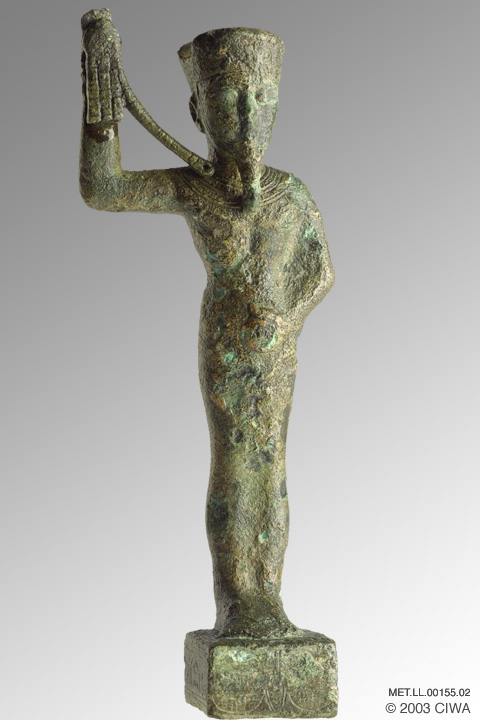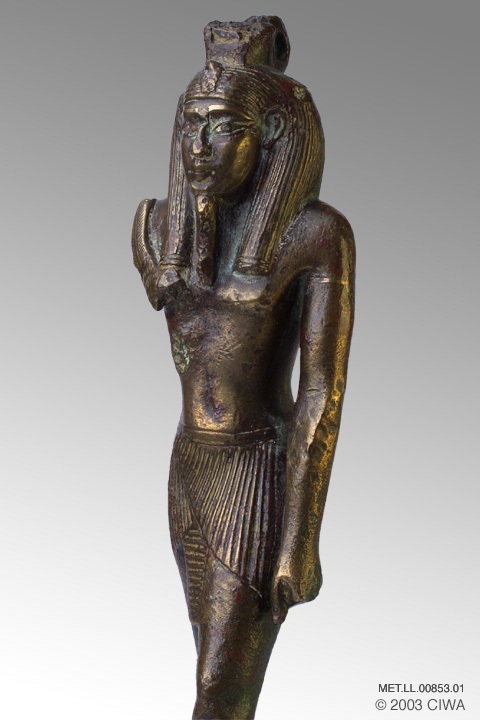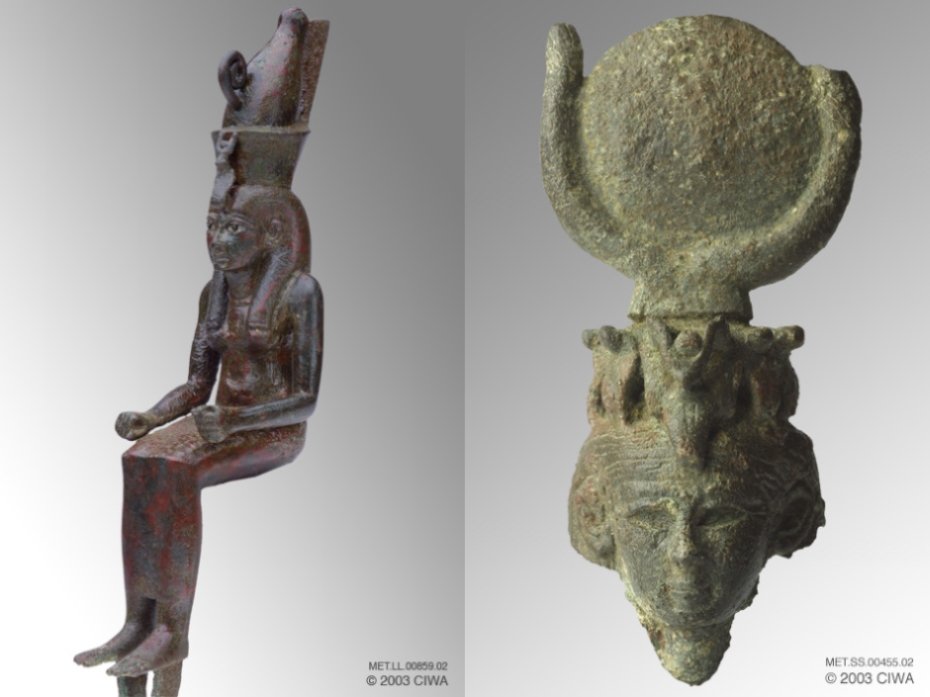Hi Nauna !
Hallo zusammen !
Eher zufällig fand ich eine Darstellung Amenhotep III. als Amun-Min. Es handelt sich um eine ca. 20 cm hohe Bronze Statuette ( MET.LL.00155 ) :

The Virtual Egyptian Museum1 ---> Drei Mal auf " Next 20 " klicken ...
... und beim Weiterblättern in genannter Quelle, Sethos I. als Nefertem ( MET.LL.00853 ) :

Zitat:
New Kingdom, Dynasty 19, Sethos I / Menmaatre, 1318 BC–1304 BC.
Lower Egypt, Memphis, Bronze, 17.8cm.
Bronze and gold statuette of King Sethi I in the shape of the God Nefertem. The two classic Nefertem attributes displayed here are the lotus flower on his head (partly missing), and the khepesh (curved sword) in his right hand. The king's cartouche appears on the bracelet on his left upper arm, and on his belt buckle. |
|
Im Unterschied zu Götterbildnissen die vermutlich die Gesichtszüge des jeweils regierenden Herrschers tragen ( z.B. Tutanchamun / Anchesenamun als Amun / Mut in Luxor bzw. Karnak ) scheinen diese hier inschriftlich als Darstellung der Könige identifizierbar.
Zwei Darstellungen der Königin Hatschepsut, als Mut ( MET.LL.00859 ) und Hathor ( MET.SS.00455 ), sind ebenfalls zu finden :

- Vollbild -
Zitat:
... Queen Hatshepsut’s throne name ( Maat-Ka-Re ) is displayed on the statuette’s forehead as a riddle, with the cobra ( Maat ), its unconventional horns of Hathor ( Ka ) and solar disk ( Re ). Egyptians were fond of such riddles. Although Maat is usually written with the feather symbol, Khalil ( 1976 : [4] 51 ) reports that Hatshepsut’s name was written using the cobra instead of the feather at her temple of Deir el-Bahri. ... |
|
Gruß, Lutz.
> Antwort auf Beitrag vom: 15.11.2007 um 21:09:02
|